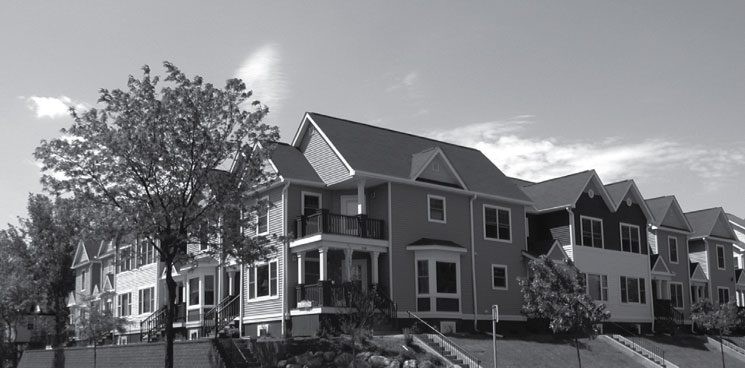Since their inception, most subsidized affordable-ownership housing programs administered by federal, state, and municipal agencies have used a single strategy for increasing homeownership among U.S. households. Let’s call this strategy Plan A. Focused on creating affordable-ownership housing payments to make an otherwise unattainable home attainable, this national homeownership strategy of choice has yet to produce a single unit of affordable-ownership housing.
Ownership housing is affordable if the price is right. However, public funders and private lenders alike have embraced affordable payments as the strategic outcome of choice, making Plan A virtually the only way nonprofit housing advocates and developers can get funding. Thus, those of us in the nonprofit housing field have had little choice but to get on board.
In fact, Plan A is so firmly entrenched, most of us can’t grasp any other affordability paradigm. Yet a better strategic response to a shortage of affordable-ownership housing does exist. Let’s call this strategy Plan B.
Grounded in a more equitable assessment of what constitutes a viable and vibrant community, Plan B is a response that better balances the dual goals of secure, affordably priced homeownership opportunities and meaningful wealth-accumulation. It’s time to go to Plan B. Here’s why.
The Case Against Plan A
“Affordable Payments!” — the heart of Plan A — is an effective marketing gimmick on a used-car lot. But a simple cost/benefit analysis — billions of tax dollars expended without producing a single unit of affordable-ownership housing — shows that Plan A fails the straight-face test as our nation’s primary and dominant subsidized affordable ownership housing strategy.
Plan A’s strategy is to subsidize the purchase of an unaffordable home. The lion’s share of required subsidy comes from federal taxpayers and is funneled to homebuyers through a vast national network of down-payment or homebuyer-assistance programs administered by state and local governments. A relatively small portion of the required subsidy comes from tax-deductible contributions to private, nonprofit foundations and community-based affordable-housing organizations. Subsidy is delivered to the homebuyer in the form of a low- or no-cost loan. Monthly payments on the loan are not required; thus, the total monthly cost of ownership is made affordable. The loans are typically “due-on-sale,” but repayment requirements vary from place to place at the discretion of the local governing body and its program administrators. Some loans are repaid. Most loans are partially forgiven. Some are forgiven entirely.
If subsidy is recovered from an outgoing homeowner when the home sells — again at an unaffordable price — it is generally recycled back into the assistance program to be combined with an infusion of new subsidy and loaned to another eligible household. The required infusion of new subsidy steadily increases from one sale transaction (or resale) to the next, because homes keep getting more expensive and incomes don’t keep up. The only outcome possible from this plan is a plentiful supply of unaffordable ownership housing. Just look around.
Plan A’s goal is to increase homeownership, but the percentage of U.S. households that own their homes has been hovering between 65 percent and 70 percent for the past several decades. After discounting for temporary increases attributable to the tsunami of predatory lenders preying on the unsuspecting, the misinformed, and the overeager, the stagnant homeownership stats constitute an indictment of Plan A.
Decades of uncritical acceptance have lent Plan A an aura of institutional permanence, impervious to direct challenge or question. Critical assessment is not only necessary, however, but possible and long overdue.
I recently completed a comparative analysis of forecasted Plan A and Plan B outcomes over a 25-year period in a hypothetical jurisdiction using typical transaction details for each plan based on standard housing-development and affordability factors faced by communities everywhere. A few of the outcomes from this analysis are summarized in the accompanying chart. The outcomes were measured against the following key objectives: number of affordable units produced, effective use of available subsidy, number of households served, and wealth accumulation among households served.
An analysis of these projected outcomes shows that Plan A is an inefficient and costly response to the affordable-ownership housing problem. Worse, given identical allocations of program subsidy, Plan A can be expected to serve fewer households at a higher cost per assisted household. This is because Plan A is essentially an exercise in treading water. Each of Plan A’s affordable payment homes eventually returns to the market for sale at an unaffordable price. In the sample analysis, 85.57% of the transactions occurring over the program period merely replace or re-subsidize previously “affordable” homes while requiring ever-increasing allocations of per-transaction subsidy to do so.





I just completed a relative analysis of foretasted Plan A and Plan B outcomes over a 25-year period in a theoretical jurisdiction using characteristic transaction details for each plan based on standard housing-development and affordability factors faced by communities everywhere.
—————————————————————————————————-
Hg Mould Spray ::